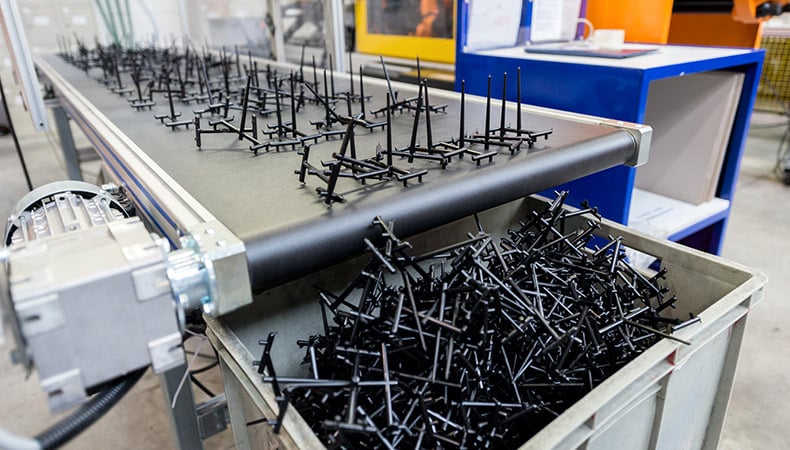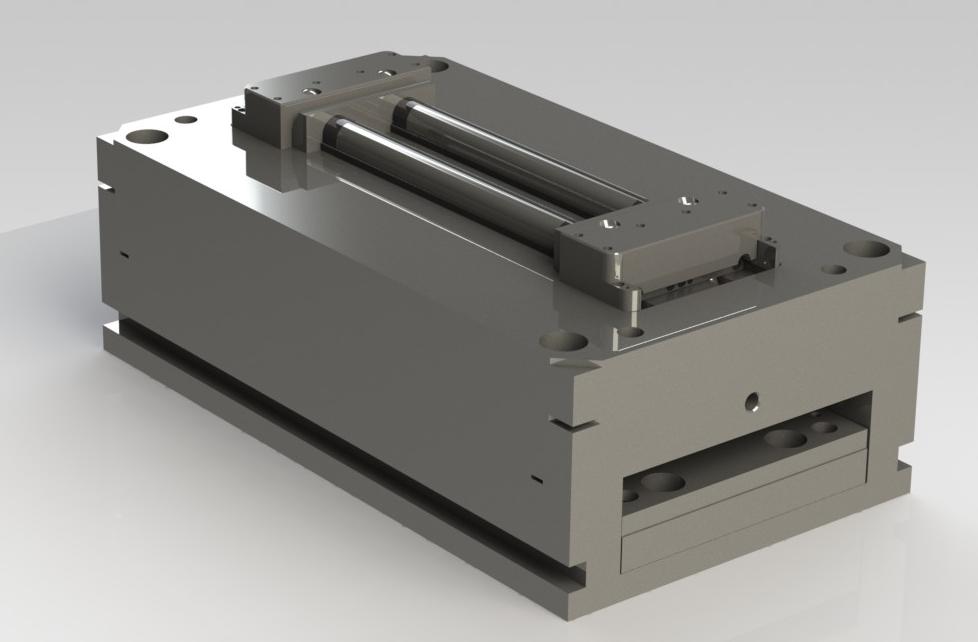Comprehending the Plastic Injection Molding Refine for High-Quality Production
Understanding the Essentials of Plastic Injection Molding Procedures
Plastic injection molding serves as a keystone of contemporary manufacturing, providing a systematic strategy to producing complicated elements with precision. Exploring these crucial elements could disclose exactly how even small adjustments can lead to considerable renovations in manufacturing end results, elevating concerns about the capacity for technology in this established procedure.
What Is Plastic Injection Molding?
Plastic injection molding is a widely made use of manufacturing procedure that changes thermosetting and thermoplastic products right into specific and complicated forms. This method is preferred for its ability to create high volumes of similar parts with remarkable accuracy, making it a crucial technique in various sectors, consisting of auto, durable goods, and clinical tools.
The process includes thawing the picked plastic product and infusing it right into a mold and mildew under high stress. The mold, created to the requirements of the preferred component, enables the molten plastic to materialize as it cools and solidifies. When the material has hardened, the mold and mildew is opened, and the ended up part is ejected.
Plastic shot molding supplies numerous advantages, including lowered waste, uniformity in manufacturing, and the ability to incorporate elaborate layouts that might be testing with other making methods. In addition, it sustains a broad series of products, each giving unique buildings that can be customized for details applications. As industries remain to introduce, plastic injection molding continues to be at the center, enabling the development of innovative products that meet developing customer needs.
The Injection Molding Process
The injection molding process is a sophisticated method that involves a number of crucial phases to create top quality plastic elements. Originally, plastic pellets are fed into a warmed barrel where they are melted into a viscous fluid. This molten plastic is after that injected under high pressure right into a precision-engineered mold, which forms the product into the wanted form.
Once the mold is filled, the plastic is enabled to strengthen and cool, taking the shape of the mold and mildew cavity. Cooling time is vital, as it impacts the cycle time and the final residential or commercial properties of the molded component. After enough cooling, the mold opens up, and the ended up element is ejected utilizing ejector pins.

Products Utilized in Shot Molding
Different materials can be made use of in the shot molding process, each offering one-of-a-kind buildings that deal with particular applications. One of the most commonly made use of products consist of thermoplastics, thermosetting plastics, and elastomers.

Thermosetting plastics, like epoxy and phenolic resins, go through a chemical change throughout the treating process, leading to an inflexible, stringent structure. These products are ideal for applications needing high heat resistance and structural integrity, often utilized in electrical insulators and automobile components.
Elastomers, including silicone and rubber-based products, provide versatility and resilience. Their distinct properties make them suitable for applications that demand flexibility, such as seals and gaskets.
Additionally, specialized products like bio-based plastics and composites are obtaining grip for their environmental advantages and boosted performance qualities, broadening the extent of shot molding applications in numerous sectors. Understanding the homes of these materials is critical for choosing the appropriate type for specific projects.
Advantages of Shot Molding
Injection molding attracts attention as an extremely effective manufacturing process that provides various benefits for generating complicated get rid of precision. One of the most substantial benefits is the capacity to develop elaborate layouts that would be difficult or tough to attain with various other approaches (Plastic Injection Molding). The process permits detailed features and tight resistances, making certain high-grade components
Additionally, shot molding is understood for its quick manufacturing abilities, making it an excellent selection for high-volume production. As soon as the mold is developed, parts can be generated quickly, reducing lead times and enhancing total productivity. This efficiency not just decreases production prices but anonymous additionally provides an affordable edge in the market.
The versatility of products used in shot molding better enhances its appeal. A large range of thermoplastics and thermosetting polymers can be utilized, permitting manufacturers to pick materials that best fulfill their details requirements, consisting of warm, strength, and adaptability resistance.
Moreover, the procedure lessens waste, as excess material can typically be reused and recycled. This sustainability element adds to a reduced environmental influence, making injection molding an accountable production option. Generally, the benefits of shot molding make it a favored approach for several sectors.
Variables Influencing Product High Quality
While numerous elements can influence product high quality in injection molding, recognizing these elements is essential for achieving optimum outcomes. Trick facets include product choice, refining specifications, and mold and mildew design.
Product option plays a vital function, as different polymers show special homes that impact flowability, strength, and thermal security. Insufficient product option can lead to defects such as warping or incomplete dental filling.
Handling specifications, including stress, temperature, and cycle time, have to be carefully controlled. Variations in these settings can lead to incongruities my review here partly dimensions and surface area coating. For example, excessively high temperatures might create degradation of the polymer, while poor stress can cause short shots.
Mold and useful link mildew layout is equally vital, as it figures out the flow of the molten plastic and the cooling process. Poorly designed molds might bring about uneven cooling prices, leading to recurring tensions and dimensional mistakes.

Conclusion
To conclude, plastic shot molding functions as an important production process that makes it possible for the efficient production of premium components. Mastery of the injection molding procedure, consisting of the understanding of materials and the impact of various elements on item top quality, is essential for accomplishing optimum outcomes. The advantages of this technique, such as cost-effectiveness and style adaptability, more emphasize its relevance throughout numerous sectors, solidifying its standing as a favored choice for high-volume production.
Plastic injection molding serves as a cornerstone of modern manufacturing, providing a methodical technique to producing intricate components with precision.Plastic injection molding supplies several advantages, including decreased waste, uniformity in manufacturing, and the capability to integrate elaborate layouts that might be challenging with various other making techniques (Plastic Injection Molding). As sectors continue to introduce, plastic shot molding continues to be at the forefront, enabling the development of sophisticated items that satisfy evolving customer needs
The injection molding procedure is a sophisticated strategy that entails several essential phases to generate premium plastic components.In final thought, plastic shot molding offers as an essential manufacturing process that enables the effective production of high-grade elements.